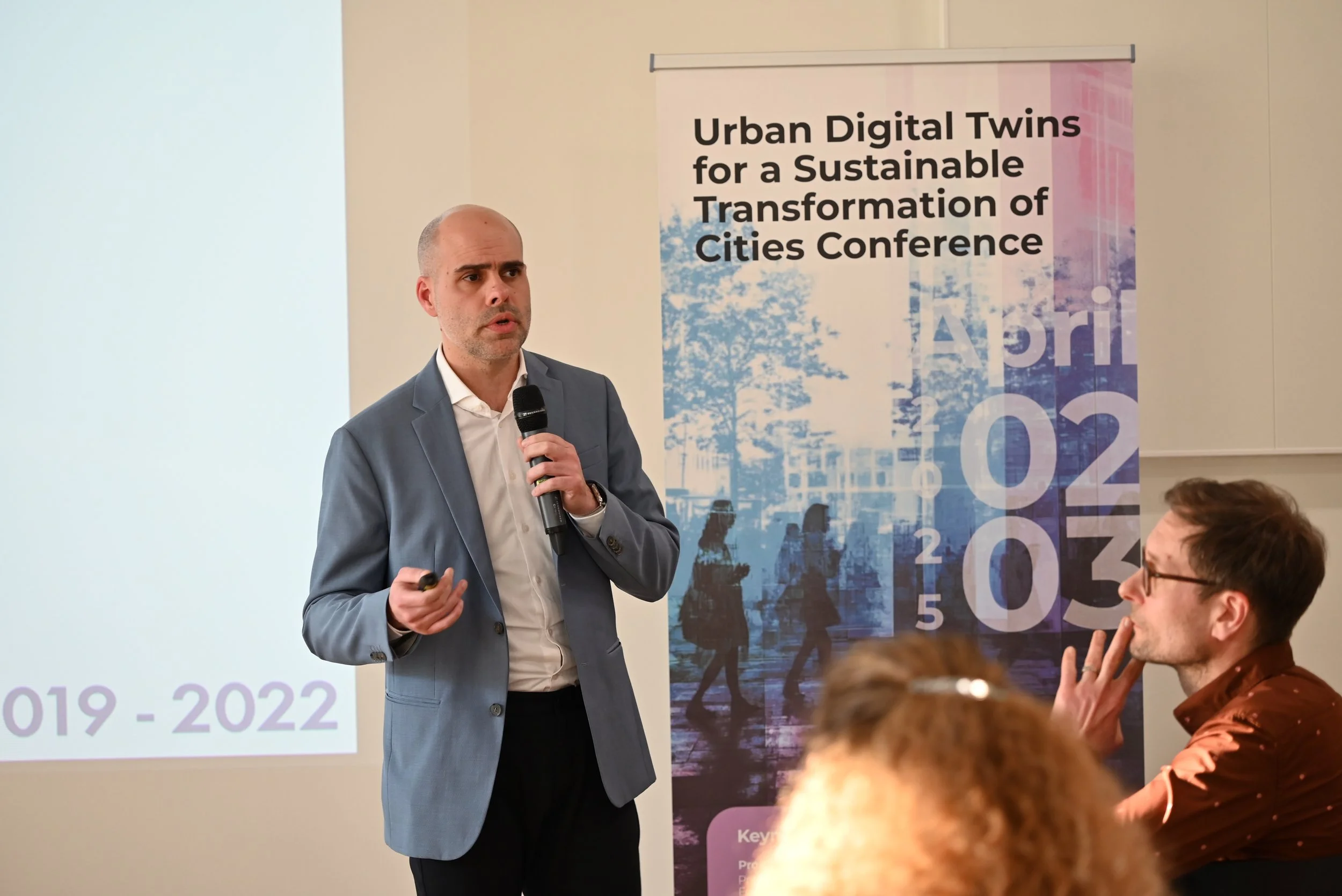Urban Digital Twins for a Sustainable Transformation of Cities conference
On April 2-3, 2025, the City Science Lab in Hamburg hosted the hybrid “Urban Digital Twins for a Sustainable Transformation of Cities” conference.
The event gathered leading scientists, researchers and practitioners to critically discuss on the question of how urban digital twins can foster a transformation of cities towards sustainability and resilience. With around 90 participants attending in person and 350 joining online, the conference reached full capacity.
The conference took place within the framework of the Connected Urban Twins (CUT) project, which is funded by the German Federal Government as a Model Project Smart City. The event was part of the Digital Twin Days, which comprised of a practical "CUT Innovations” day, focusing on solutions and innovative approaches from the project, and the conference.
The conference programme included keynotes from Elsa Arcaute, Professor of Complexity Science and Luca Mora, Professor of Urban Innovation, alongside 28 presentations and lightning talks covering key themes such as smart city governance, urban planning, people-centred approaches, modelling and simulating complexity.
Please access the full conference agenda here.
Visit this playlist for selected conference presentations.
“If you think urban digital twins alone will solve urban sustainability challenges then you don’t understand smart city technology – and you don’t understand the challenges.”
Our conference takeaways
Sustainability research on UDTs is an early bird: UDTs show promising results for addressing urban sustainability challenges with regard to digital innovation, informing planning decisions, multi-stakeholder collaboration, learning processes, opening (data-)silos and transforming administrative structures. But as UDTs are still in the prototyping and implementation phase, in most cases we so far cannot assess impacts on the urban fabric or the living quality in cities, which would be crucial to evaluate sustainability contributions.
Addressing smart city governance challenges: In many cases, administrations are overwhelmed with the implementation of UDTs. There is a lack of digital infrastructure, data bases, competent personnel, sufficient budgets, acceptance of digital technology and even goal orientation. Administrations need smart leadership and political support to build digital capacities and literacy and to ensure that these are used to achieve sustainability goals.
Researching implementation and impacts: Experimentation and labs are key to drive innovation but the follow-up integration in smart city governance structures is just as important. The latter is often a problem due to the limited scope and duration of funding programs. Furthermore innovations and administrative structures often do not fit together. To establish UDTs in urban planning and to foster it’s transfer between cities, we need long-term and transdisciplinary research agendas that find solutions for implementing UDT and investigate impacts for urban development.
Balancing "the social" in and outside UDTs: We have to enhance UDTs with people-centered approaches. On the one hand we need more inclusive representation of social processes and addressing topic-related use cases in urban development IN the twins. On the other hand we have to facilitate social processes like collaboration, debates, shared decision making AROUND the twins. Evenmore, we need more critical debate on the role of UDTs in planning processes and society at large. To find the right balance we have to carefully consider the needs of communities, administrative requirements and technical possibilities.
Don’t try to be too smart: The implementation of UDTs should not be too complex and demanding. Smart city technology must recognize the limited possibilities and different challenges of administrations and cities. Straightforward technical applications are important for this and can sometimes be enough to help make cities more sustainable.
Modeling urban complexity: Representing the complex interactions, multi-scale hierarchies and emergent properties of cities in UDTs is and will be inherently limited – no matter the advancement of AI. While in some cases, accurate predictions of future scenarios can be plausibly made, in other cases the model results themselves have a significant impact on future developments.
Biodiversity/urban greenery: More-than-human actors, such as the city’s flora and fauna, oftentimes receive little representation in a city’s digital twin. Novel approaches in modeling and simulating biodiversity and urban greenery can help to create this missing link.








